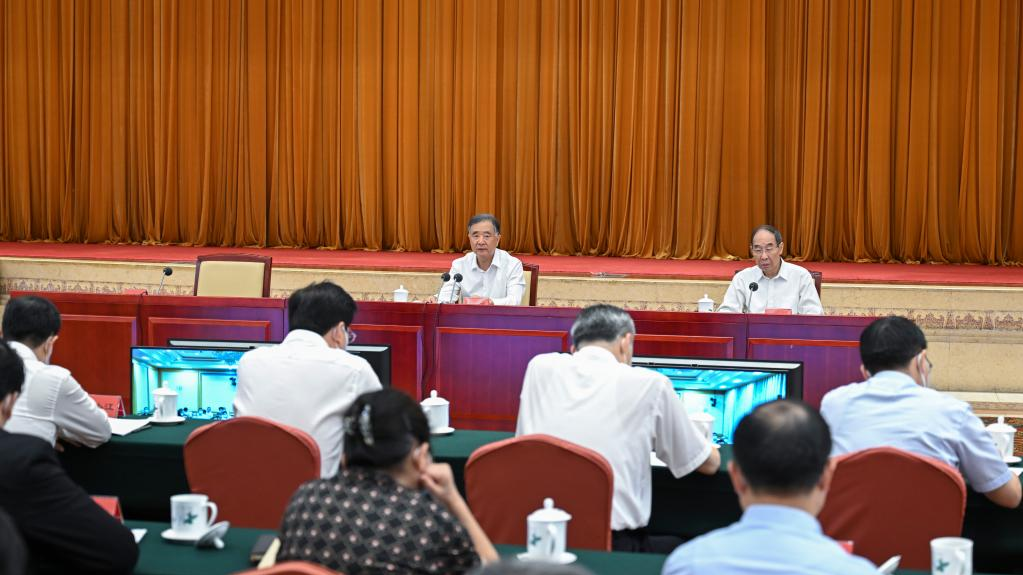
A picture of the Potala Palace in Lhasa, southwest China's Tibet Autonomous Region. /CFP
A picture of the Potala Palace in Lhasa, southwest China's Tibet Autonomous Region. /CFP
Since the 18th National Congress of the Communist Party of China (CPC) in 2012, an unprecedented amount of funding and personnel have been earmarked for pairing-up support work in Tibet Autonomous Region, a senior official said on Thursday.
Wang Yang, a member of the Standing Committee of the Political Bureau of the Communist Party of China (CPC) Central Committee and head of a central coordinating group for Tibet work, made the remarks at a conference in Beijing on pairing-up support for Tibet with a focus on enhancing the program that rallies national support to boost the development of the autonomous region.
Addressing the meeting, the third of its kind, Wang called for full implementation of the Party's policies for the governance of Tibet in the new era. He called for efforts to address deep-seated problems affecting Tibet's lasting stability and high-quality development, as well as improved pairing-up support.
Wang said priority should be placed on promoting exchanges and interactions among people of various ethnic groups, and that education for fostering a strong sense of community for the Chinese nation and the education of China's national conditions should be stepped up.
He urged efforts to focus on solving the most pressing difficulties and problems that are of great concern to the people and aid Tibet's rural revitalization drive, so that more benefits can be directly delivered to a wider range of people on a long-term basis.
Wang also stressed the importance of promoting industrial and employment assistance to Tibet, and strengthening the Party's leadership over the assistance.

Wang Yang (L), a member of the Standing Committee of the Political Bureau of the Communist Party of China (CPC) Central Committee and head of a central coordinating group for Tibet work, attends a conference on pairing-up support for Tibet Autonomous Region in Beijing, China, August 18, 2022. /Xinhua
Wang Yang (L), a member of the Standing Committee of the Political Bureau of the Communist Party of China (CPC) Central Committee and head of a central coordinating group for Tibet work, attends a conference on pairing-up support for Tibet Autonomous Region in Beijing, China, August 18, 2022. /Xinhua
The pairing-up support program, involving rallying national support for Tibet, was launched by the central government in 1994. Under the policy, some central state organs, provincial-level regions and centrally-administered state-owned enterprises were designated to provide assistance to specific areas of Tibet.
For example, Beijing and Jiangsu Province have been providing pairing-up assistance to Lhasa, the capital city of Tibet. Shanghai, along with Shandong, Jilin and Heilongjiang provinces, China Baowu Steel Group and chemical firm Sinochem Group have been pairing up with Xigaze, the second-largest city in Tibet.
Under the policy of pairing-up assistance for Tibet, 52.7 billion yuan (about $7.77 billion) was injected into Tibet through 6,330 projects between 1994 and 2020. Meanwhile, more than 9,600 cadres were also selected and dispatched to work in the region.
Vigorous national support for Tibet has contributed to Tibet's leapfrog development over the past several decades and helped this autonomous region eradicate absolute poverty at the end of 2019. Hunger and poverty have since become a thing of the past.
Regional gross domestic product (GDP) in Tibet ballooned to 208 billion yuan in 2021 from 129 million yuan in 1951. People are seeing fatter wallets, with rural residents' per capita disposable income maintaining double-digit growth for 19 consecutive years.
Average life expectancy in Tibet has increased from 35.5 years in 1951 to 72.19 years in 2021. Tibet is the first provincial-level region in China to provide 15 years of publicly funded education, from kindergartens to senior high schools.
(With input from Xinhua)

